Metals are ubiquitous and are everywhere in diverse forms and uses. However, based on their iron content, there are two types of metals; Ferrous and non-ferrous metals. But here, we will be providing you with great information about non-ferrous metals.
So, what is non ferrous metal? What are its history, types, applications, and properties? How does it differ from ferrous metals? Keep reading as we provide answers to these questions and other important things you need to know about this metal type.
What Are Non-Ferrous Metals?
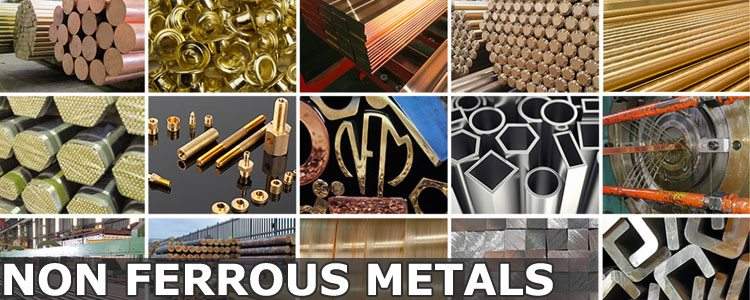
Non-Ferrous metals are metals that do not contain iron or ferrous. Consequently, all metals in their pure form are non-ferrous, asides from Iron (Fe).
Moreover, this metal type tends to be more expensive than its ferrous counterpart. However, their amazing properties, like rust and corrosion resistance, ease of fabrication, and zero-magnetic abilities, make manufacturers overlook the cost.
Another reason why manufacturers overlook the cost of this metal is its recyclability. It is easier and less energy-consuming to recycle non-ferrous metals than mine. The processes required to recycle them include re-smelting and re-casting.
Non-ferrous metals include; copper, lead, nickel, titanium, and tin. They also include precious metals like silver, gold, tungsten, vanadium, mercury, and cobalt. Besides, these metals have a wide variety of uses, including making different types of sheet metals.
Additionally, the primary source of these metals is usually chemical compounds such as sulfides, silicates, and carbonates.
History of Non-Ferrous Metal
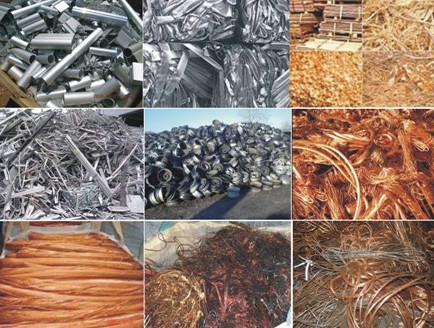
As the first metals used by humans for metallurgy, non-ferrous metals have a rich history. Early humans were attracted to these metals because they hardly corrode.
One of the first non-ferrous metals discovered by man is copper, and this signaled the start of the copper age. Furthermore, in order to make maximum use of this metal, humans had to learn the art of forging and molding. The low melting point and ease of fabrication made copper man’s metal of choice.
The Bronze Age swiftly followed the Copper Age when humans discovered they could alloy copper with tin to produce bronze.
Humans have used non-ferrous metals for a longer period than their ferrous counterparts. As a matter of fact, around 5000 BC humans developed a technique used to make bronze. This technique involved smelting and alloying copper with other metals like tin and arsenic. The onset of this smelting and the alloying period ended the stone Age, marking the beginning of the Bronze Age.
Other non-ferrous metals discovered are gold and silver. These metals took the place of wood and stone as human ornaments. However, since these metals are rare, they are used to manufacture luxury items.
Today, we use non-ferrous metals to make tools, vehicle engines, pipelines, cutlery, electrical cables, ornaments, and many more.
Common Properties of Non-Ferrous Metals
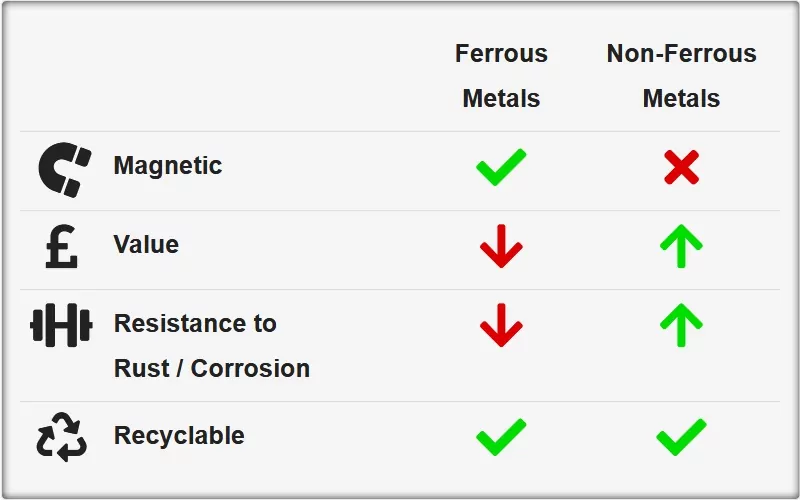
These metals have certain desirable properties that make them suitable for residential, industrial, and commercial applications.
Defining the common properties of these metals is nearly impossible. The reason is that a large variety of metals fall into this category. Their properties range from soft and hard to brittle and ductile. However, going through the metal strength chart would indicate the relative strength of different metals.
All non-ferrous metals share some properties. Let us examine these properties.
- High Corrosion And Rust Resistance: Non-ferrous metals do not have significant iron content, making them highly resistant to rust and corrosion. This makes them ideal for making gutters, roofs, and other applications that require exposure to the elements.
- Non-Magnetic: This metal type is non-magnetic, making them ideal for wirings and electronics.
- Lightweight: These metals are often lighter than ferrous metals. The difference in weight is due to the disparity in the carbon content of both metal types. However, you should note that not all non-ferrous metals are lightweight. Some metals like osmium, lead, and tungsten is heavier and denser than ferrous metals like steel.
- Cost: If you want to use non-ferrous metals for manufacturing, you should know they are more expensive than their ferrous counterparts. There are two major reasons that make it costly. The first is the demand and supply of these metals. There is more demand for non-ferrous metals than their supply, making them quite expensive to acquire. The other reason is they have applications in various industries, ranging from automotive and aerospace to engineering and construction. This means that many industries are after these metals that are in limited supply, making them more expensive.
- Recyclability: All metal types are recyclable. Non-ferrous metals can be recycled severally with minimal risk of degradation compared to ferrous metals. They also retain their chemical properties during the process. It is important to recycle these metals because they are not readily available. Another reason to recycle is that the process reduces waste and protects the environment. It does this by saving energy on extraction from natural sources and decreasing gas emissions that would occur during the mining process.
Non Ferrous Metal Examples & Applications
Since a non-ferrous metal is any metal that does not contain a significant quantity of iron, there are many such metals worldwide. Hence, we will highlight only the important and common ones and their applications in manufacturing. Below are some non ferrous metals examples and their applications.
Aluminum

This is one of the most important non-ferrous metals. This is in no small way thanks to its ease of machining and lightweight. Another reason why aluminum is common is that it is the base metal for many alloys. Aluminum is also one of the most cost-effective metals for CNC machining.
It is still an excellent conductor, although this metal does not conduct heat and electricity as much as copper. Other properties of aluminum include excellent malleability and ductility. On the downside, this metal is relatively expensive and becomes quite hard after cold working, requiring annealing.
Aluminum alloy has applications in a diverse range of industries. It is lightweight and ideal for making airplanes, automotive parts, and yachts. It is also used to make everyday items like drink cans, saucepans, and bicycle frames.
Copper

Copper and its alloys, brass (copper and zinc) and bronze (copper and tin), have diverse uses in several industries. This is due to its properties of high electrical conductivity, ductility, thermal conductivity, and corrosion resistance. When it is not alloyed, it is soft and ductile.
These properties make copper and its alloys good for manufacturing heating vessels and heat exchangers. Its high electrical conductivity makes it ideal for motors and wiring. Furthermore, copper has applications in producing plumbing fittings, roofing materials, statues, and cooking utensils.
On the downside, copper is quite expensive, and wires made with this material are usually susceptible to corrosion. It also loses its shape since the material is soft.
Related: Examing the Difference Between Brass vs Bronze vs Copper
Nickel
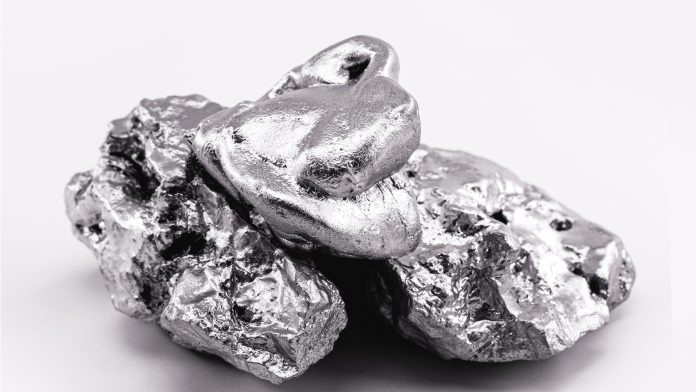
Nickel is another common non ferrous metal. The properties of this silvery metal include corrosion resistance, toughness, and temperature tolerance. Although this metal exists in a pure form, this form has minimal applications.
However, this metal gains excellent mechanical and chemical properties when alloyed with other elements. This gives it application in the hot-section of airplanes, automobiles, and marine equipment, as well as in the production of cryogenic equipment.
Besides, nickel can resist corrosion even at high temperatures, making it a good material for producing nails, pipes, and armor plating.
Zinc
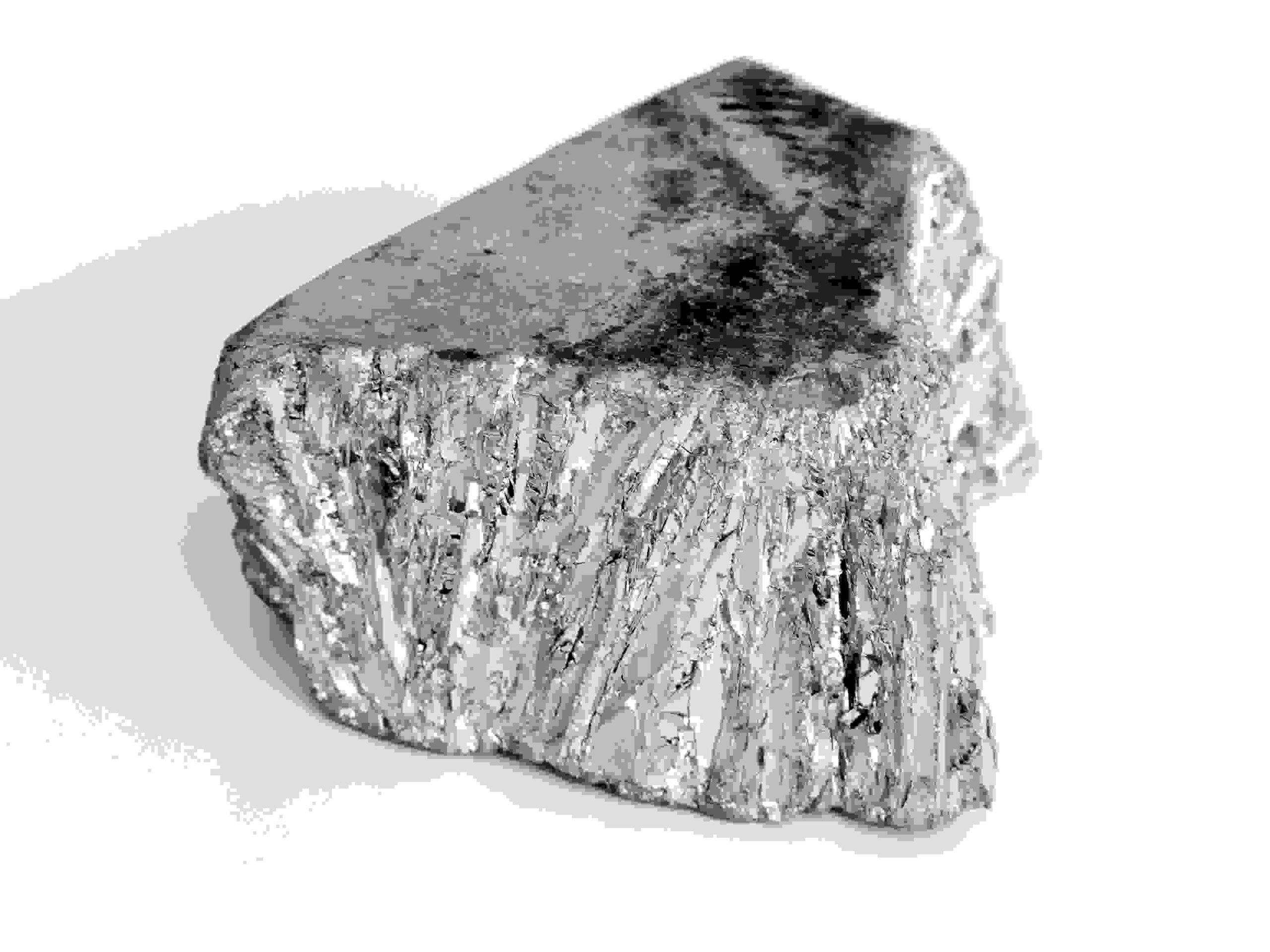
Zinc used as both a standalone metal and an alloying element has a diverse range of uses. One of its most popular uses is alloying copper to form brass.
Another application of zinc is as a galvanizing element. Metals galvanized with steel have better corrosion resistance. This gives zinc applications in producing lampposts, heat exchangers, metal roofs, guardrails, car bodies, and suspension bridges. It also has use in cathodic protection as the anode material for batteries.
Another use of zinc is its oxide which has application in rubber manufacturing. It helps disperse heat during rubber manufacturing.
Lead
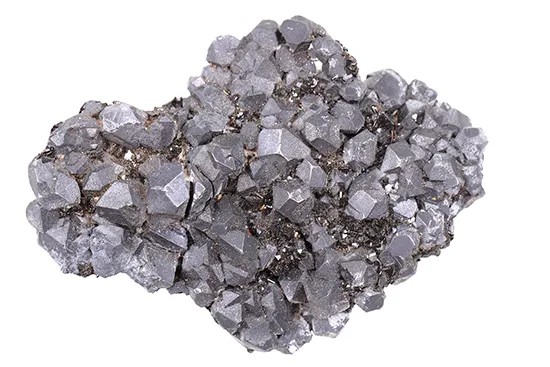
This metal has many applications and is the heaviest common non-ferrous metal. Furthermore, lead is toxic and causes harm to human health. This metal being corrosion resistant and heavy has application in producing paint, fuels, and bullets.
Lead is a poor conductor of electricity but is ductile, dense, and malleable. On exposure to air, lead experiences a color change. It also has applications in producing cable sheathing, lead crystal glass, and weight belts for diving. Its main uses in today’s world are in the production of acid tanks, power cables, and batteries. However, lead is chemically inert. This means it does not react with many chemicals.
Silver

Silver is a relatively soft metal with a lustrous and shiny appearance. It is a metal with the best thermal and electrical conductivity, highly malleable, and resistant to corrosion.
Silver is used in many industries, from solar technology and electronics to brazing and soldering. Other applications of silver include engine bearings, currency, water purification, tableware, medicine, and jewelry. On the other hand, it has the lowest contact resistance of all the metals.
Gold

Gold is one of the non-ferrous metals with great malleability. It is also ductile and corrosion-resistant. Gold does not react with other chemicals, so there is little risk of degradation due to chemical reactions. Furthermore, this metal has excellent thermal and electrical conduction.
It has applications in the production of jewelry, like necklaces, rings, and bangles. It also serves as a legal tender for finance and investment. Besides, its electrical conductivity makes it ideal for use in the production of electronics and computer devices. Gold is also used in manufacturing colored glass and for tooth restoration in medicine and dentistry.
Titanium
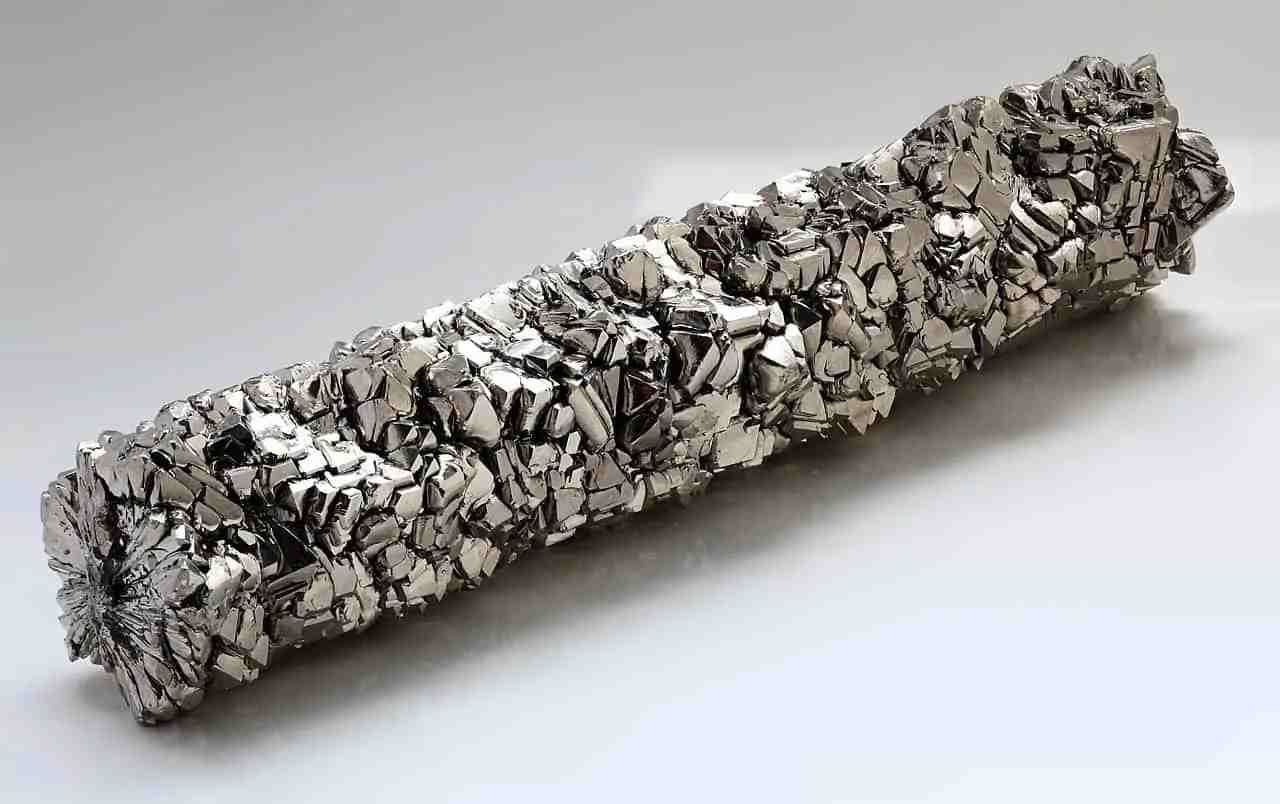
This metal has an excellent strength-to-density ratio as well as corrosion resistance. An alloy of this metal with aluminum and iron creates lightweight yet strong metal.
Unalloyed, titanium metal‘s strength is comparable to some steel, although it is less dense. This metal has applications in several industries, including the agricultural, medical, sporting, military, aerospace, and automotive industry.
Non-Ferrous for Machining or Casting
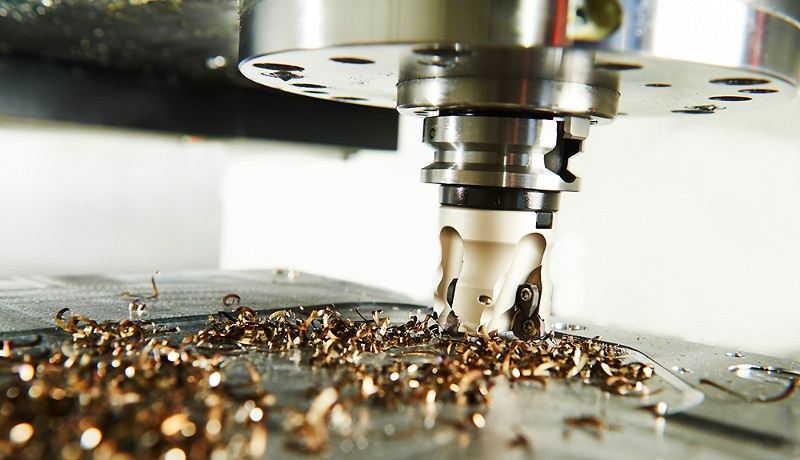
The sand casting process, metal mold process (high-pressure die casting and low-pressure permanent mold), and investment casting are the ideal casting methods for these metals.
With properties such as low density, high conductivity, resistance to rust and corrosion, high strength-to-density ratio, and non-magnetic ability, non-ferrous metals are ideal for structural applications. They are also ideal for metal parts manufacturing.
Manufacturers refine these metals through electrolysis. During casting, manufacturers add the metal into the iron used for the casting process before cast pouring. The aim is to get a special cast iron or alloy steel with improved properties. The properties often range from heat and corrosion resistance to wear and tear resistance.
Differences Between Ferrous and Non-Ferrous Metals
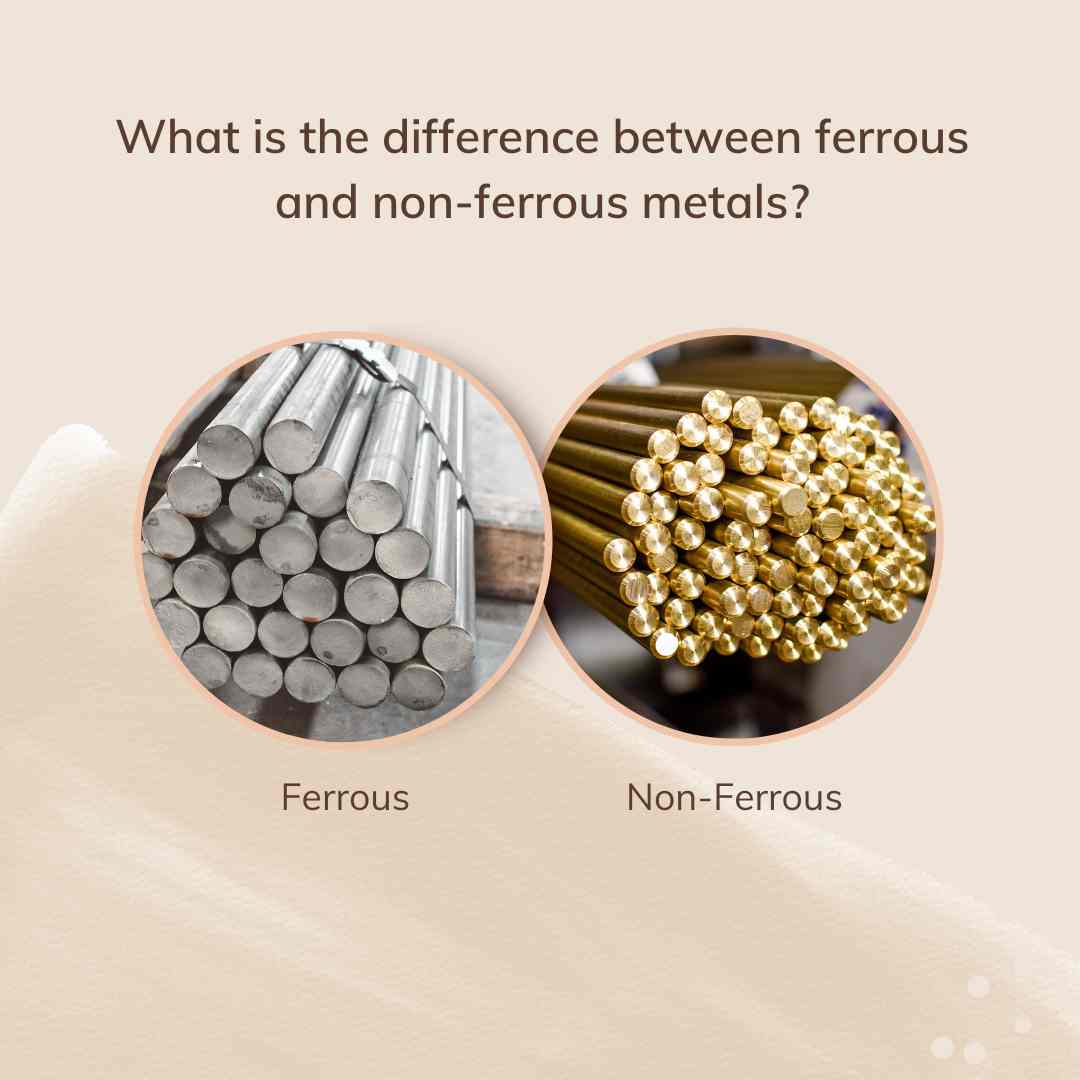
What metals are non ferrous or ferrous? Ferrous metal contains a significant quantity of iron, while non-ferrous metal does not contain iron. Both metal types have properties and attributes that make them desirable.
Manufacturers value ferrous metals for their durability and strength. Making them the ideal materials for use in the construction industry. Common ferrous metals include alloy steel, carbon steel, wrought iron, and cast iron. However, ferrous metals’ carbon and iron content make them susceptible to rust on exposure to moisture. The only ferrous metal that resists rust is wrought iron, and this is due to its low carbon content.
On the other hand, non-ferrous metals are rust and corrosion-resistant. This makes them ideal for making outdoor signs, roofs, gutters, and liquid pipes. They are also highly malleable, making them suitable for creating ornaments and jewelry.
Additionally, non-ferrous metals have properties and attributes that make them highly demanded, from lightweight to zero-magnetic ability. Being non-magnetic makes them ideal for wiring and electronic applications. Common examples of non-ferrous metals include; aluminum, silver, zinc, copper, gold, titanium, lead, and nickel.
Conclusion
Non-ferrous metals have properties that give them applications in several fields. However, they are in short supply, making them more expensive than ferrous metals Common non-ferrous metals include titanium, silver, copper, gold, lead, zinc, and nickel.
Choosing a company to manufacture metal parts is as important as choosing the material you want to use. The reason is that the right material in the hands of the wrong manufacturer would not yield favorable results. This is why you need RapidDirect for all your manufacturing that involves the use of ferrous or non-ferrous metals. RapidDirect is a manufacturing company that stands head and shoulder above its contemporaries in the manufacturing industry.
If you are looking for a trusted and reliable company to help you manufacture metal parts and prototypes, then RapidDirect is the best for you. We engage in numerous services ranging from rapid tooling and electroplating to product prototyping and general production.
Besides, we provide numerous ferrous and non-ferrous metal choices to help you achieve your vision for your product. We also offer competitive pricing, which helps reduce the cost of production. To get a quote, all you have to do is upload your design file and select your ideal product material on our platform.
So what are you waiting for? Contact RapidDirect today!


